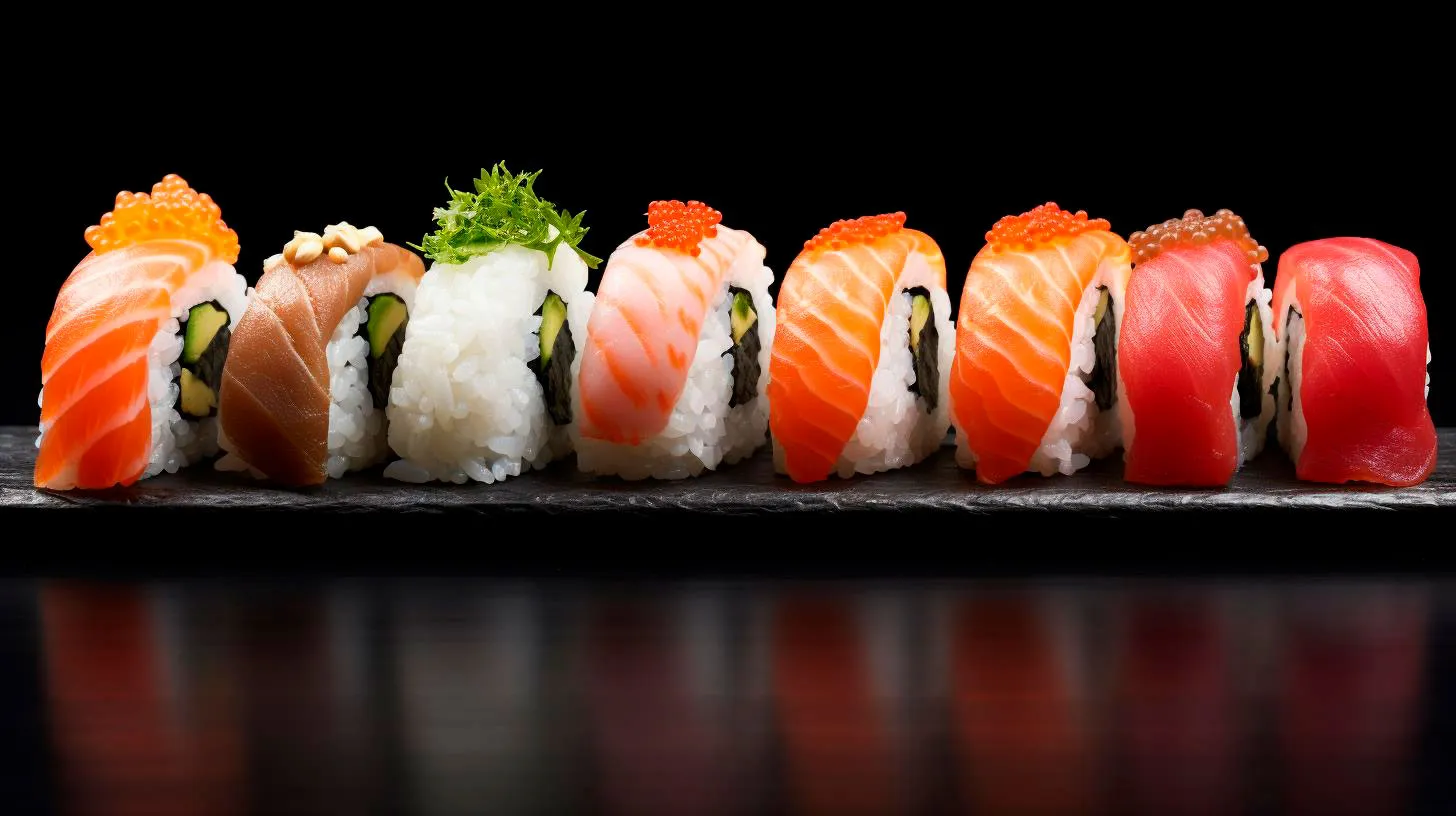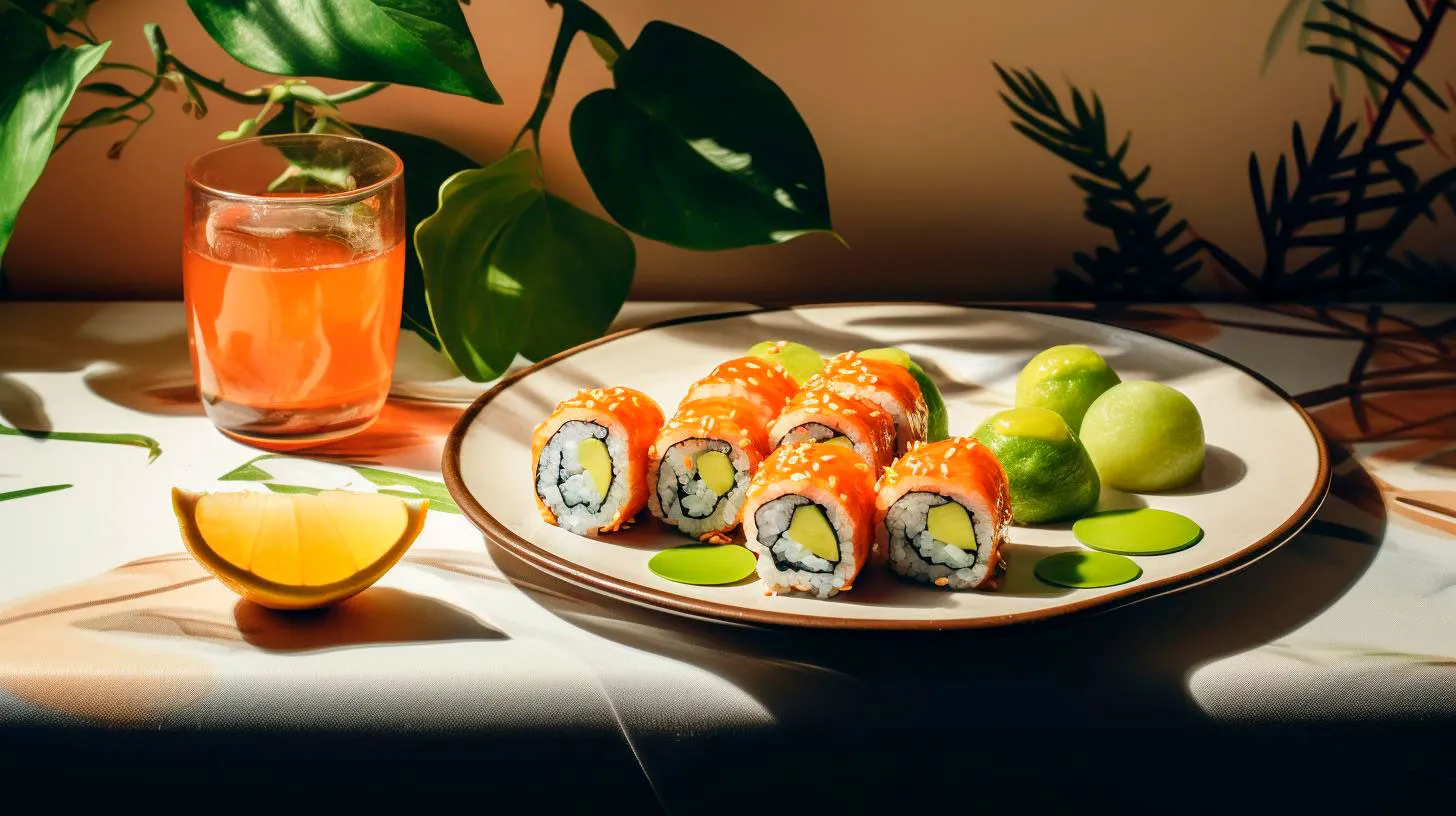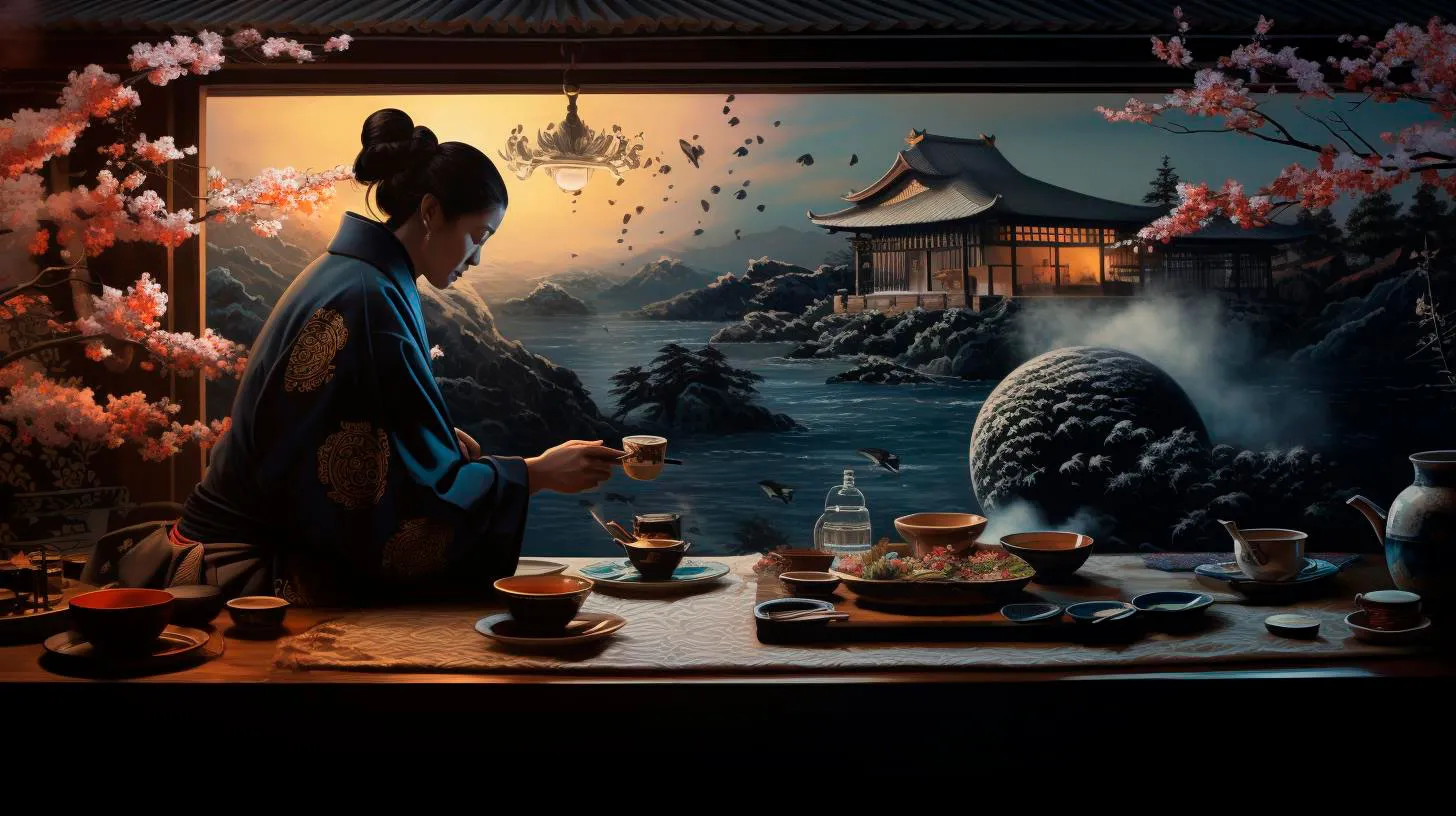From Plate to Poem: Unveiling the Harmony of Sushi Haikus
The Art of Sushi
Sushi, originating from Japan, is a culinary delicacy that has conquered the hearts and palates of food enthusiasts worldwide. It is a seamless marriage of flavors, textures, and aesthetics, meticulously crafted by skilled sushi chefs. With each bite, sushi offers a symphony of taste that leaves a lasting impression.
Key Takeaways:
- Sushi is a Japanese delicacy known for its exquisite flavors and meticulous preparation.
- The art of sushi involves a masterful combination of taste, texture, and presentation.
- Sushi has gained global popularity due to its unique and memorable dining experience.
The Charm of Haikus
Haiku is a traditional form of Japanese poetry, renowned for its concise and evocative nature. Composed of just three lines, typically containing 17 syllables, haikus capture a fleeting moment in time, often inspired by the beauty of nature. They provoke emotion and engage readers in an introspective journey.
Key Takeaways:
- Haiku is a concise form of Japanese poetry that encapsulates a single moment or experience.
- Haikus often draw inspiration from nature and provoke introspection.
- The brevity of haikus invites readers to reflect and find their own meaning within the words.
The Sushi Haiku Sensation
Imagine the fusion of these two art forms – the sensual delight of sushi paired with the emotive power of haikus. Sushi haikus, also known as “sushikus,” give voice to the poetry inherent in each sushi dish, revealing its essence through carefully crafted words. Sushikus not only capture the visual appeal of sushi but also stimulate the senses and resonate with emotion.
Experience the essence of different types of sushi through sushikus:
1. Nigiri
Fresh fish atop rice
Melting flavors, ocean’s gift
Gently kissed by soy
Key Takeaways:
- Nigiri, a classic sushi style, showcases the simplicity and elegance of sushikus.
- Sushikus capture the merging of flavors between the fish, rice, and soy sauce.
2. Maki
Seaweed wrap, snug tight
Crunch of cucumber and shrimp
Rolling waves of taste
Key Takeaways:
- Maki rolls are known for their colorful and visually appealing composition.
- Sushikus evoke the playful texture and flavors contained within each roll.
3. Sashimi
Bare fish on pure ice
Slicing through the morning mist
Silent ocean’s gift
Key Takeaways:
- Sushikus complement the purity and delicacy of sashimi, highlighting each slice of fish.
- The imagery used in sushikus transports readers to the serene beauty of the ocean.
Appreciating Sushi Haikus
Seeking the perfect sushi haiku is akin to searching for a hidden gem. It requires a discerning eye, an appreciation for the artistry of both sushi and haikus, and a palate eager to explore new sensations. Sushikus offer an opportunity to reimagine the dining experience and delve deeper into the sensory and emotional aspects of sushi.
Key Takeaways:
- Finding a well-crafted sushi haiku involves a keen understanding of both sushi and haiku art forms.
- Sushikus can transport diners to a poetic realm, enhancing their overall dining experience.
Celebrating the Fusion of Flavors and Words
The union of sushi and haikus is more than a culinary experiment; it is a celebration of artistic expression and the senses. Sushikus invite us to slow down and savor the intricate layers of taste and meaning in each sushi bite. So next time you enjoy a plate of sushi, let your imagination run wild and craft your own sushi haiku, appreciating the harmony of flavors and words.
Key Takeaways:
- Sushikus celebrate the coming together of two art forms, inviting us to appreciate culinary and poetic beauty.
- Crafting a personal sushi haiku enhances the dining experience, fostering creativity and mindfulness.
Indulge in an extraordinary experience where the delicate beauty of sushi unites with the profound essence of haikus. From plate to poem, sushi haikus offer a unique and unforgettable way to embrace the artistry of food and the written word.
Fusion of Flavors When Traditional Haikus Meet Sushi Rolls
This unexpected combination has taken the culinary world by storm, captivating food enthusiasts and poetry lovers alike.
Sushi, originating from Japan, is a centuries-old dish that has evolved into a global sensation. It consists of vinegared rice combined with various ingredients, such as fresh seafood, vegetables, and sometimes even fruits. Served with soy sauce, wasabi, and pickled ginger, sushi is a true masterpiece that balances taste, texture, and presentation in every bite.
On the other hand, haikus are traditional Japanese poems characterized by their brevity and focus on capturing the essence of a fleeting moment in nature. With just three lines of 5, 7, and 5 syllables respectively, haikus transcend the boundaries of language, offering a glimpse into the beauty of the natural world in a profound and concise manner.
Savoring the Blend: Haiku-Inspired Sushi Rolls
The fusion of haikus and sushi rolls involves incorporating elements of haikus into the presentation and naming of the sushi rolls. Each roll represents a poetic expression, drawing inspiration from nature and the seasons. These haiku-inspired sushi rolls not only tantalize the taste buds but also engage the imagination, creating a multi-sensory dining experience.
Here are some examples of haiku-inspired sushi rolls:
- Sakura Sunrise: A delicate roll blending pink-hued salmon and vibrant avocado, capturing the beauty of cherry blossoms in full bloom
- Moonlit Ocean: A roll showcasing the freshness of tuna and cucumber, evoking the calmness of a moonlit night over the vast expanse of the ocean
- Golden Harvest: A delectable combination of sweet potato tempura and spicy mayo, reminiscent of the golden hues of autumn
These sushi rolls not only provide a visual representation of the haikus but also allow diners to experience the flavors associated with each poetic masterpiece. By appealing to both the palate and the imagination, haiku-inspired sushi rolls elevate the dining experience to new heights.
The Advantages of Haiku-Inspired Sushi Rolls
The fusion of haikus and sushi rolls offers unique advantages that set them apart from traditional sushi. Some of the key advantages include:
- Cultural Fusion: By combining elements from two distinct art forms, haiku-inspired sushi rolls celebrate cultural diversity and promote a deeper appreciation of both Japanese cuisine and poetry.
- Enhanced Dining Experience: Haiku-inspired sushi rolls go beyond the ordinary by engaging not only the taste buds but also the senses of sight and imagination. This creates a truly memorable dining experience that lingers in the mind long after the meal is over.
- Creative Menu Options: For sushi chefs, haiku-inspired sushi rolls offer an exciting opportunity to showcase their creativity. By experimenting with flavors, colors, and presentation techniques, they can craft unique sushi rolls that reflect their artistic vision.
- Increased Customer Engagement: The poetic names and artistic presentation of haiku-inspired sushi rolls ignite curiosity and intrigue among diners. This often leads to conversations about the flavors and meanings behind each roll, fostering a deeper connection between the chef and the customer.
Key Takeaways
The fusion of traditional haikus and sushi rolls has produced a culinary experience that is aesthetically and gastronomically pleasing. Here are the key takeaways:
- Haiku-inspired sushi rolls combine the art of Japanese poetry with the culinary craft of sushi-making.
- These rolls offer a multi-sensory dining experience by incorporating visual elements and poetic expressions.
- Haiku-inspired rolls celebrate cultural fusion and elevate the appreciation for Japanese cuisine and poetry.
- Chefs have the freedom to experiment and create unique sushi roll combinations, reflecting their artistic vision.
- The poetic names and presentation of these rolls spark conversations and deepen customer engagement.
As the fusion of haikus and sushi rolls continues to gain popularity, it illustrates the endless possibilities of blending different art forms. By stepping outside traditional boundaries, culinary and artistic creations can reach new heights, surprising and delighting those who encounter them.
Savoring Sushi: Exploring the Art of Haikus in Japanese Cuisine
Join us as we dive into the world of sushi and explore the art of haikus in Japanese cuisine.
The Intricate Art of Sushi Making
Sushi is more than just a tasty treat; it is a work of art crafted by highly skilled sushi chefs. Here are some key features that make sushi so special:
- Freshness: Sushi chefs emphasize the use of fresh and high-quality ingredients to create the perfect flavor combination.
- Presentation: Sushi is presented in an aesthetically pleasing manner. The colors, textures, and arrangements are carefully considered to stimulate visual appeal.
- Bite-sized Delights: Sushi is typically enjoyed in bite-sized portions, allowing you to savor each element and experience a symphony of flavors.
Sushi has come a long way since its humble origins as a street food in Japan. Today, it has evolved into an international sensation, with numerous variations and adaptations catering to diverse palates.
The Simplicity and Elegance of Haikus
Haikus are a form of traditional Japanese poetry that encapsulate vivid imagery and emotions through a concise structure. Here’s what sets haikus apart:
- Three Lines: Haikus consist of three lines, typically with a syllable pattern of 5-7-5.
- Nature and Seasonal References: Haikus often incorporate references to nature and the changing seasons, allowing readers to connect with the beauty of the natural world.
- Emotional Impact: Despite their brevity, haikus convey powerful emotions and leave a lasting impression on the reader.
Haikus are admired for their ability to capture a moment in time and evoke a sense of tranquility and contemplation. They reflect the principles of simplicity and elegance, which are deeply ingrained in Japanese culture.
Savoring Sushi through Haikus
Just as sushi is a culinary art form, haikus can be used to immerse oneself in the experience of enjoying sushi. Let’s explore how haikus beautifully capture the essence of sushi:
- Delicate Balance: Haikus, like sushi, strike a delicate balance between different elements. They encapsulate the harmony of flavors and textures found in sushi.
- Visual Appeal: Much like a beautifully presented sushi platter, haikus paint vivid mental images that transport the reader to a tranquil setting.
- Simplicity and Depth: Haikus convey profound emotions in just a few words, mirroring the simplicity and depth found in every bite of sushi.
This connection between sushi and haikus highlights the shared appreciation for artistry and the pursuit of perfection in Japanese culture.
Key Takeaways
- Sushi is an artful creation that combines fresh ingredients, delicate flavors, and meticulous presentation.
- Haikus are concise poems that capture powerful emotions and often include references to nature.
- Sushi and haikus both embody simplicity, elegance, and a quest for balance.
- Haikus can enhance the experience of savoring sushi, capturing its essence through vivid imagery and emotional impact.
Next time you indulge in a plate of sushi, take a moment to appreciate the artistry behind it. Allow the flavors to dance on your palate and let the haikus transport you to the serene landscapes of Japan. Savor every bite, and immerse yourself in the harmonious blend of culinary and poetic craftsmanship.


